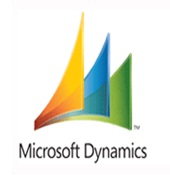
There are many different systems in a large company's "back office," including planning, manufacturing, distribution, shipping, and accounting. Enterprise resource planning (ERP) is a system that integrates all of these functions into a single system, designed to serve the needs of each different department within the enterprise. ERP is more of a methodology than a piece of software, although it does incorporate several software applications, brought together under a single, integrated interface.
An ERP system spans multiple departments in a corporation, and in some cases an ERP will also transcend the corporate boundary to incorporate systems of partners and suppliers as well, to bring in additional functions like supply chain management. Because it is so vast and all-encompassing, the ERP system goes far beyond being just a simple piece of software. Each implementation is unique and is designed to correspond to the implementer's various business processes. An ERP implementation can cost millions of dollars to create, and may take several years to complete.
Once implemented, the ERP system brings tremendous advantages. Because all systems are joined together, all departments can more easily share information. The workflow that takes place between departments can become much more automated, and ultimately, customers are better served because the individual using the customer-facing applications will have access to every bit of information regarding each relevant process.
Links: Microsoft Dynamics AX | Microsoft Dynamics NAV | LS Retail